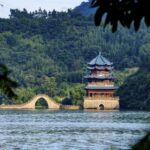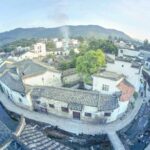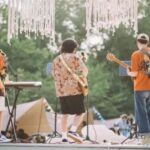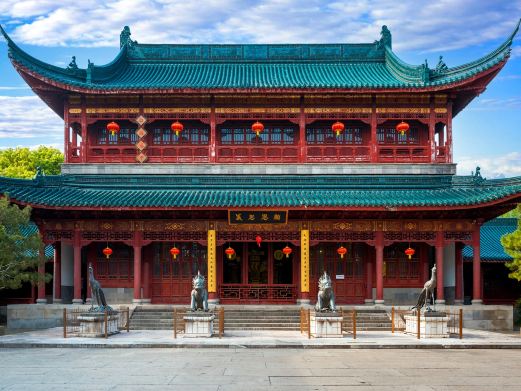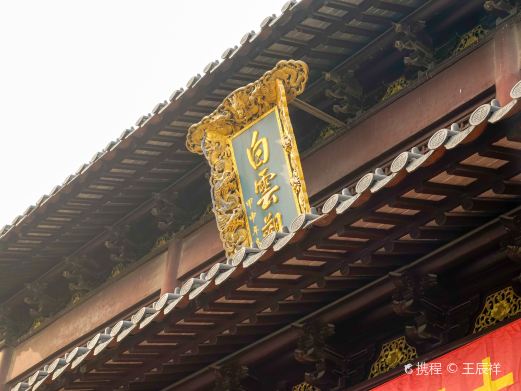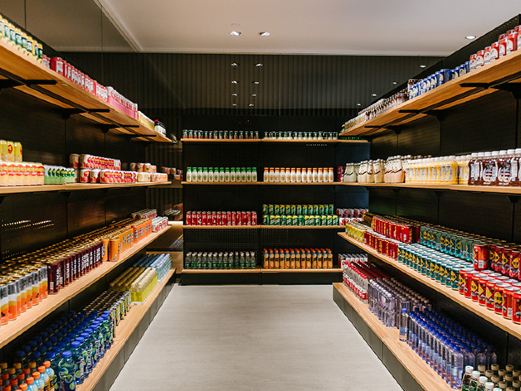King Asoka Temple, situated more than 20 kilometers away from the city center of Ningbo, is a Buddhist monastery named after the Indian Emperor Asoka. It holds a high status in the Buddhist community due to the enshrinement of sacred relics. The temple exudes an authentic Buddhist ambiance, with few tourist groups and only devout worshippers and leisurely monks strolling about, where one can even hear the rustling of falling leaves.
The history of King Asoka Temple dates back to the Jin Dynasty, with the entire monastery being simple yet solemn, and structurally intact, with halls and temples blending harmoniously with the vast mountain scenery. After entering the mountain gate, the main attractions are located right in the middle of the temple, arranged from bottom to top as the Fish Pond, Heavenly Kings Hall, Mahavira Hall, Relic Hall, and Sutra Pavilion, among others.
On the sides of these main halls, there are also buildings such as the Cloud and Water Hall, Gratitude Hall, Abbot’s Hall, Bell Tower, Hall of the Five Hundred Arhats, Foreknowledge Hall, and the Great Compassion Pavilion. General visitors mainly visit the Heavenly Kings Hall, Mahavira Hall, Relic Hall, and Hall of the Five Hundred Arhats. In front of the Heavenly Kings Hall, there is a Fish Pond with many small fish and turtles, but due to their overwhelming numbers, the temple prohibits further release of life here. Inside the hall, Maitreya Buddha is enshrined, flanked by the Four Great Kings.
Behind the Mahavira Hall is the Relic Hall, with a roof covered in golden glazed tiles. In the center of the hall stands a seven-meter-tall stone pagoda, housing a Buddha niche inlaid with the seven treasures, containing the sacred relics. Underneath the pagoda are statues of Licchavi and King Asoka, and behind the pagoda, there is a reclining Buddha statue of Shakyamuni, about four meters long. However, visitors generally cannot see the relics, as viewing requires prior application.
After visiting the Relic Hall, one can proceed to the Hall of the Five Hundred Arhats, where 500 lifelike and diverse Arhats are enshrined. After touring these main halls, visitors can also see the two well-preserved towers within the temple, one called the West Tower (commonly known as the lower tower) and the other called the East Tower, which were built later. Neither tower is climbable, but according to local beliefs, one can walk around the base of the towers clockwise to cleanse oneself of bad luck.
Additionally, there is an Upper Tower located on the mountain, but it has been damaged due to its age. Other significant historical sites within the temple include the Buddha’s footprints, Lisheng Pavilion, the core stone of the pagoda base, Mother’s Milk Spring, Half Mountain Pavilion, the Eight Auspicious Signs Site, and the Jianzhen Memorial Pavilion, which are worth photographing if one passes by.
At the temple entrance, there is a place to eat vegetarian meals, with a basic set meal costing around 50 yuan and vegetarian noodles at 25 yuan. King Asoka Temple is not far from Tian Tong Temple, and one can drive there or take bus number 162 at the temple gate. If time permits, it is recommended to visit both.
Aywang Temple is open to visitors throughout the year from 07:00 AM to 04:00 PM daily.
King Asoka Temple
King Asoka Temple, situated more than 20 kilometers away from the city center of Ningbo, is a Buddhi[...]
